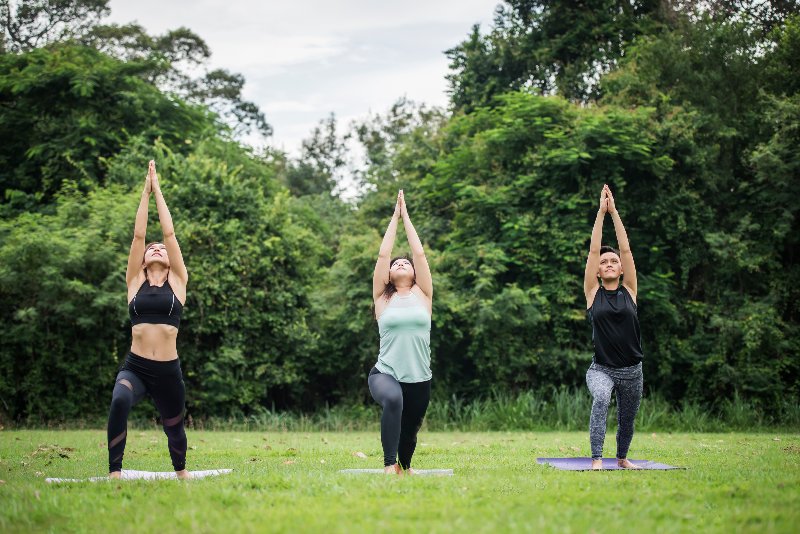
How Gyms Can Run Outdoor Fitness Classes
Outdoor fitness classes are a rapidly growing trend in recent years. Even before the Covid-19 pandemic, outdoor fitness classes have gained popularity since 2018 or so, but the reality of the pandemic has indeed forced many gyms to move their classes outside in order to stay compliant with the physical distancing regulations.
Many gym enthusiasts also love these outdoor classes, which further explains their popularity. After all, there are many benefits of outdoor training from greater Vitamin D exposure to usage of eco-friendly equipment to more fun exercises that are great for our mental well-being.
However, outdoor fitness classes can be difficult to organize and you are likely to be tied to various regulations. This is where this guide comes in.
In this guide, we’ll discuss how gyms can run outdoor fitness classes effectively so you can have a smoother transition while avoiding future problems.
What Kinds of Outdoor Fitness Classes?
You can technically run any classes outdoors, only limited with your own creativity. However, HIIT (High-Intensity Interval Training), Pilates, and Yoga are the most common types of gym classes run outdoors.

Benefits of Outdoor Fitness Classes
Using public outdoor spaces to conduct your fitness classes can not only provide more variety in your exercises but does offer some tangible benefits, including but not limited to:
- Vitamin D exposure: not only Vitamin D is important for our overall wellbeing, but it has been known for its favorable effects in viral infections.
- More space for physical distancing: with free air circulation and bigger space compared to the standard gym size, it’s easier to implement Covid-19 physical distancing rules in outdoor fitness classes
- Free promotions: since you are conducting your class in a public space, passersby might be interested in your class and you’ll basically get a free promotion with each class.
- Saving money: you can save more in costs for renting or purchasing the property since you are using public spaces. Also, typically outdoor classes will require fewer pieces of equipment, so you’ll save more money otherwise spent on new equipment.

Legal Requirements In Organizing Outdoor Fitness Classes
Different locations might have different legal requirements when it comes to organizing an outdoor class.
First and foremost, check whether the location you’re planning to hold the class in is a public space or private land since different regulations will apply. If it’s private land, you will need to ask the owner for permission.
Here you can find a pretty neat list of permit regulations in different cities in the U.S that you can consult. For example, if you are located in Boston, then you’ll need to fill an application and email it to Parks@cityofboston.gov.

Typically, once you’ve registered your outdoor fitness class with your local park’s management, you’ll get your written permit and code of conduct.
As a general rule of thumb, however, you should maintain the following in each outdoor class:
- Make sure you are not blocking other park users. If you can get a space that is relatively far away from paths, the better.
- Don’t use public facilities in the park when possible (i.e. children’s playground)
- In general, make sure your class isn’t too noisy. Respect the other park users especially for morning classes.
Insurance Requirements
Most locations in the US will require you to be insured if you are working as a personal trainer. However, even if you aren’t legally required to be insured, it’s best to protect yourself from future incidents by getting the right insurance policies for you, including but not limited to:
- Public liability insurance: will protect both trainers and clients when they get hurt or if any gym equipment is damaged during the class.
- Professional indemnity insurance: protect trainers against legal actions when a client gets hurt based on the advice given during class/session
- Personal accident: will protect trainers when they are hurt and can’t work and will cover the treatment and rehab fees
- Sports equipment insurance: will protect yourself when your equipment is lost or damaged. If you are going to bring your gym equipment to the park or outdoor public spaces, this is especially helpful
- Employers liability insurance: if you employ other trainers, this will protect your business from claims made by your employees
Organizing Outdoor Classes Effectively
There can be more issues involved when organizing an outdoor class as opposed to traditional indoor gyms. For instance, you’ll need to make sure your members can easily find the spot where the class takes place, which can be an issue if the location isn’t permanent.
Also, communicating what kind of exercises they’ll be performing and what they should take in each class can be quite difficult if you have quite a lot of members.
With that being said, having a proper class booking and scheduling software like Bookeo is very important for streamlined class management to ensure the best experience for your club members.
With Bookeo, you can schedule all your outdoor fitness classes and your club members can easily join classes and make payments on your website or Facebook page from their mobile devices.

With a proper class management platform, trainers can also easily check which club members showed up for a session, improving the transparency and accountability for each class.
Conclusion
Outdoor fitness classes can be a viable option for gyms who need to shift their business models due to the Covid-19 pandemic, and outdoor classes actually provide various benefits both to the gyms and to the club members. Above anything else, outdoor fitness classes can provide more fun and variety while keeping your members safe during the pandemic.

